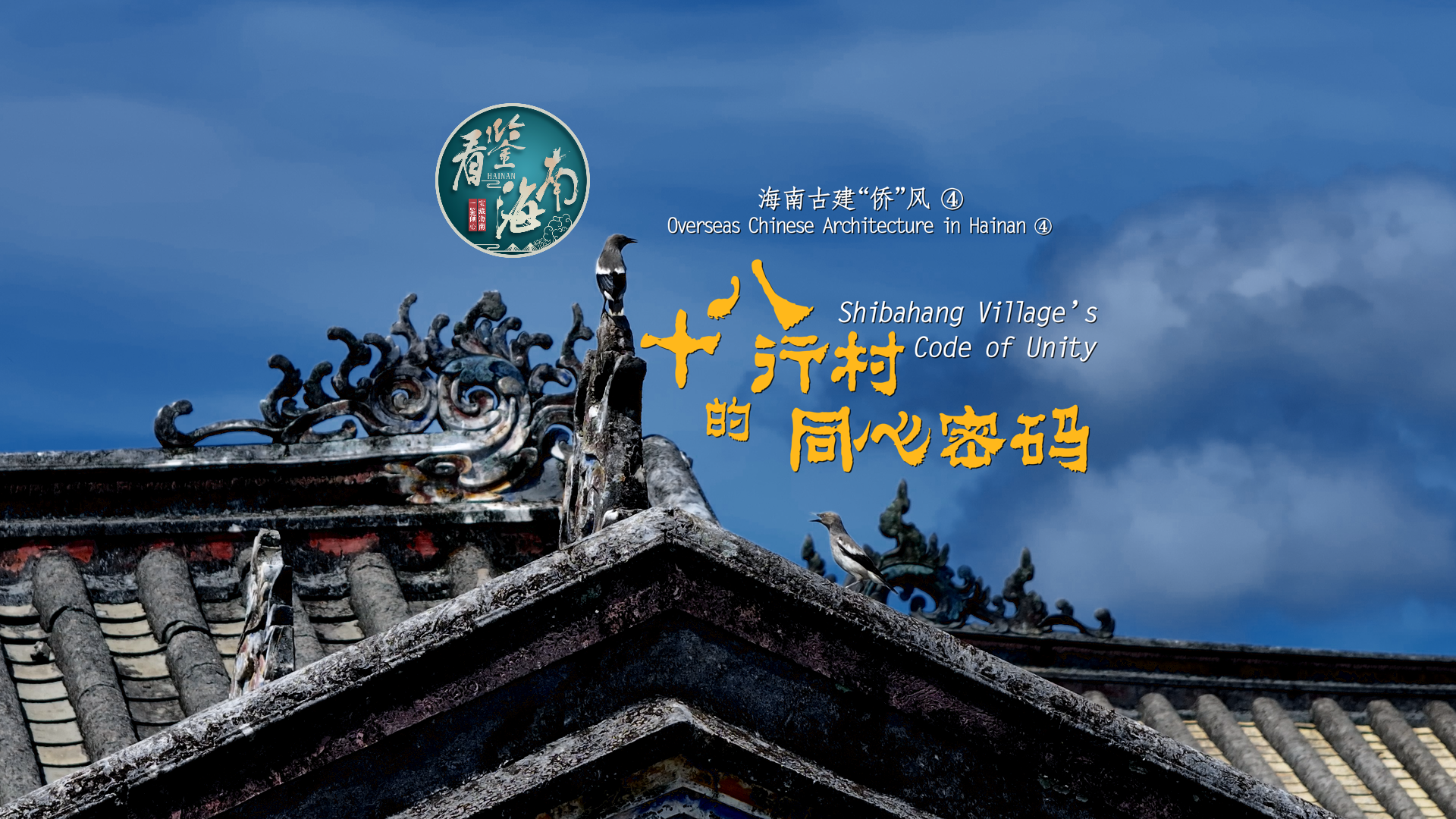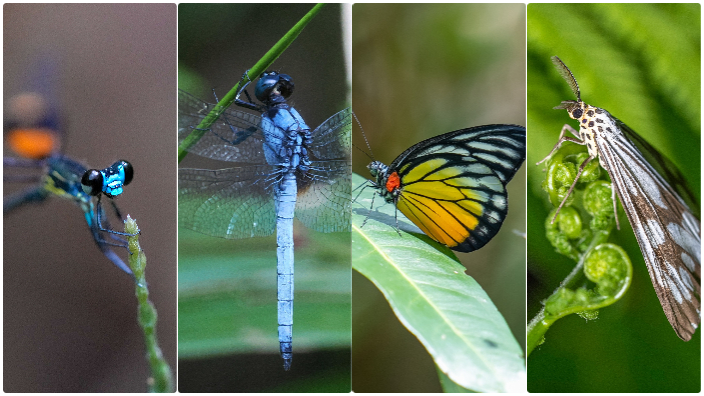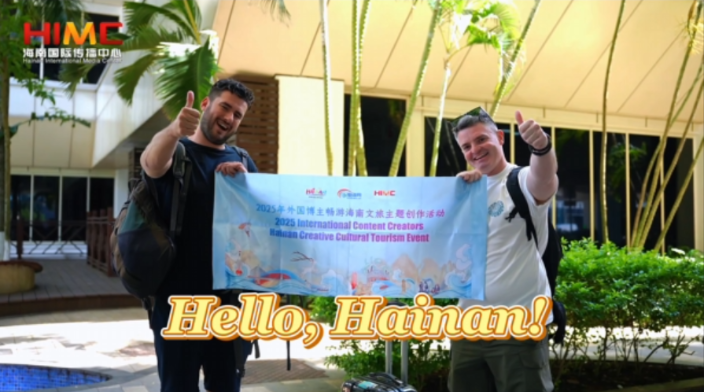
The Mid-Autumn Festival falls on the 15th day of the eighth month of the lunar calendar (on September 17th this year), when (in some parts of China) the clear, crisp skies above herald abundant harvests below. The festival is as much a time of reunion and thinking of relatives far away as it is a celebration of nature's bounty.
Originating in the early Tang Dynasty (618 - 907 CE), the festival became increasingly popular in the Song Dynasty (960 - 1279 CE). By the Ming and Qing Dynasties (1368 CE onwards), it was officially established as one of China's traditional festivals alongside the Spring Festival (Lunar New Year). The cooler, crisper weather of the season combined with the sentiments of the festival have historically tended to put artists and poets in the mood for some creative catharsis. In addition to the countless lines of festival-inspired poetry and prose crafted by writers across the ages, painters have also created many exquisite, themed works with delicate brushwork and elegant artistic conception. The careful preservation of these classic paintings into the present day affords us the precious opportunity to learn how the ancients celebrated the Mid-Autumn Festival.
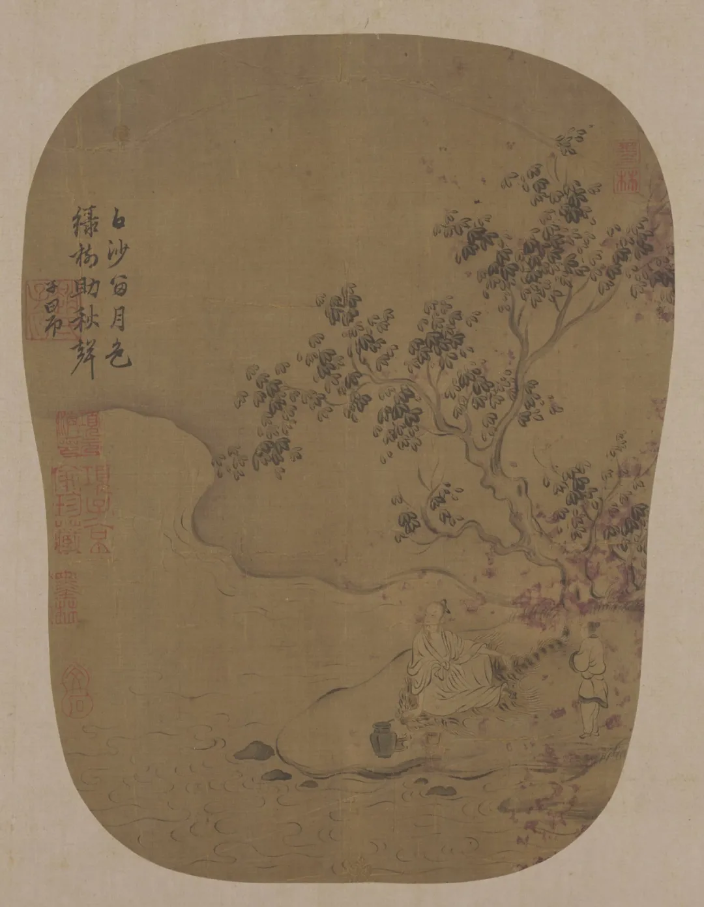
"Moonlight and Autumn Sounds" (Song Dynasty, Ma Hezhi, Liaoning Provincial Museum collection)
Admiring the Moon
The popularity of admiring the moon on the Mid-Autumn Festival reached its heights during the Tang Dynasty. Emperor Xuanzong of Tang even ordered the construction of a hundred-foot-high "moon-gazing platform" on the banks of an ornamental pool.
By the Song Dynasty, the places where one could "officially" admire the moon grew more varied. People could choose to "play with the moon" with a fan in the shadow of a parasol tree, or "walk under the moon" on a terrace while drinking and eating. During the Qing Dynasty, people also chose to gather on hilltop pavilions and recite poems in appreciation of the moon or gaze at the moon from their courtyards while thinking of their far-flung relatives.
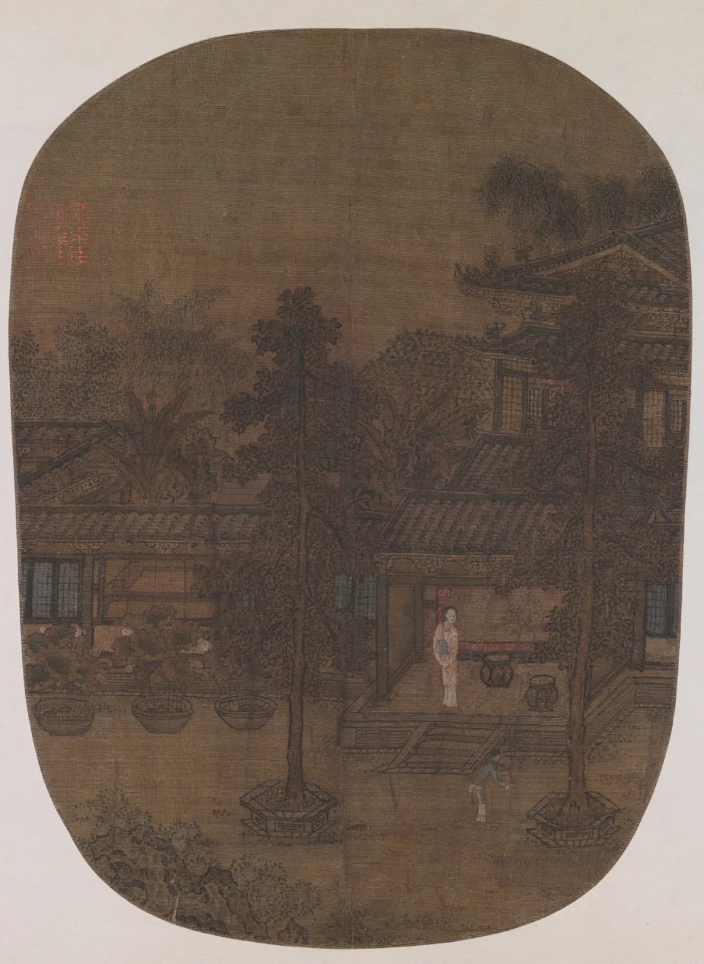
"Enjoying the Moon under the Parasol Tree" (Song Dynasty, Anon., Palace Museum collection)
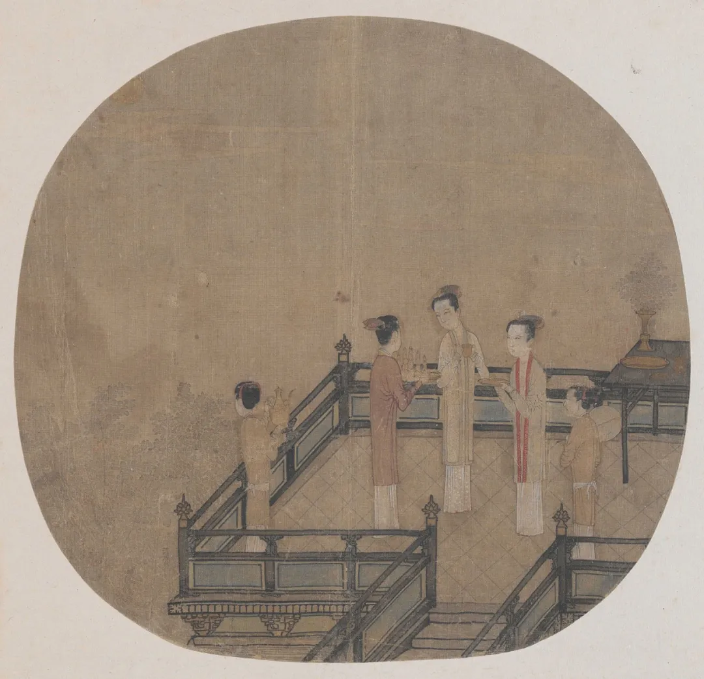
"Moonlight on the Terrace" (Song Dynasty, Chen Qingbo, Palace Museum collection)
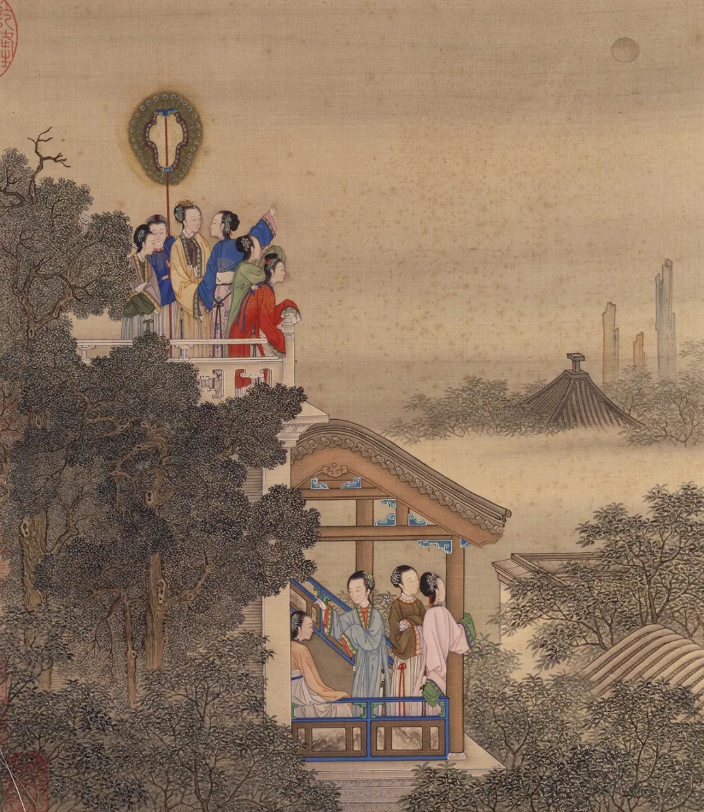
"The Life of Court Ladies in the Imperial Palace (Mid-Autumn Festival)" (Qing Dynasty, Chen Mei, Palace Museum collection)
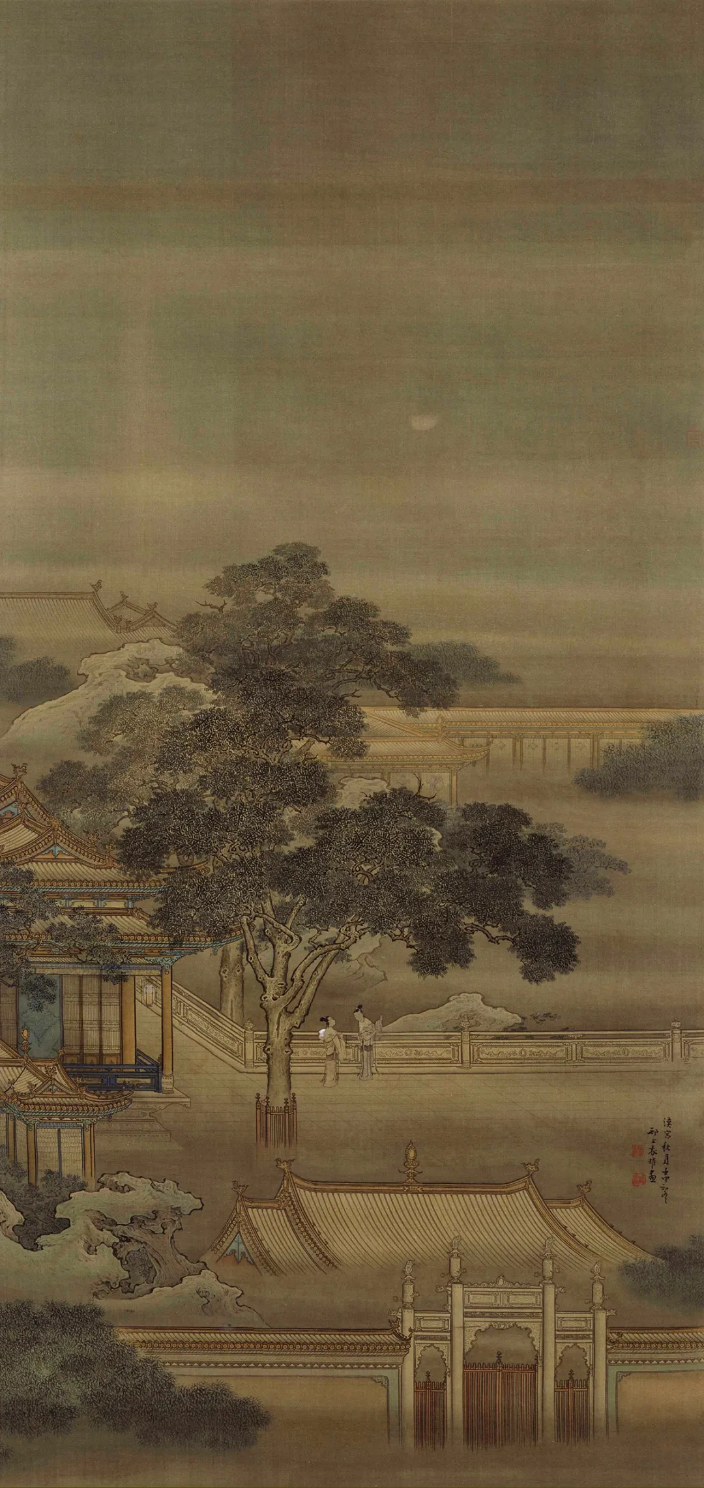
"The Autumn Moon over the Han Palace" (Qing Dynasty, Yuan Yao, Tianjin Museum collection)
Moon Worship
The ancients believed that the sun represented the sky, and the moon represented the earth. In August, the harvest season, it was deemed fitting that people should thank the earth for its gifts. Thus, the custom of "Autumn Sacrifice" was established, of which moon worship formed an integral part. Every year on the Mid-Autumn Festival, moon worship ceremonies were held in various places, and every household venerated the moon, praying for blessings.
People in the Tang Dynasty also held "moon worship ceremonies", in particular "moon worship for women". "When she opened the curtain and saw the new moon, she went down the steps to worship it. No one could hear her whisper, as the north wind blew her skirt." This is the scene of a woman venerating the moon as described in "Worshiping the New Moon" by Li Duan, a poet of the Tang Dynasty. Every Mid-Autumn night, women would place offerings such as apples, red dates, plums, and grapes on the altar, light red candles, worship the moon, and pray to "be as round and pure as the moon, like Chang'e (the moon goddess) ."
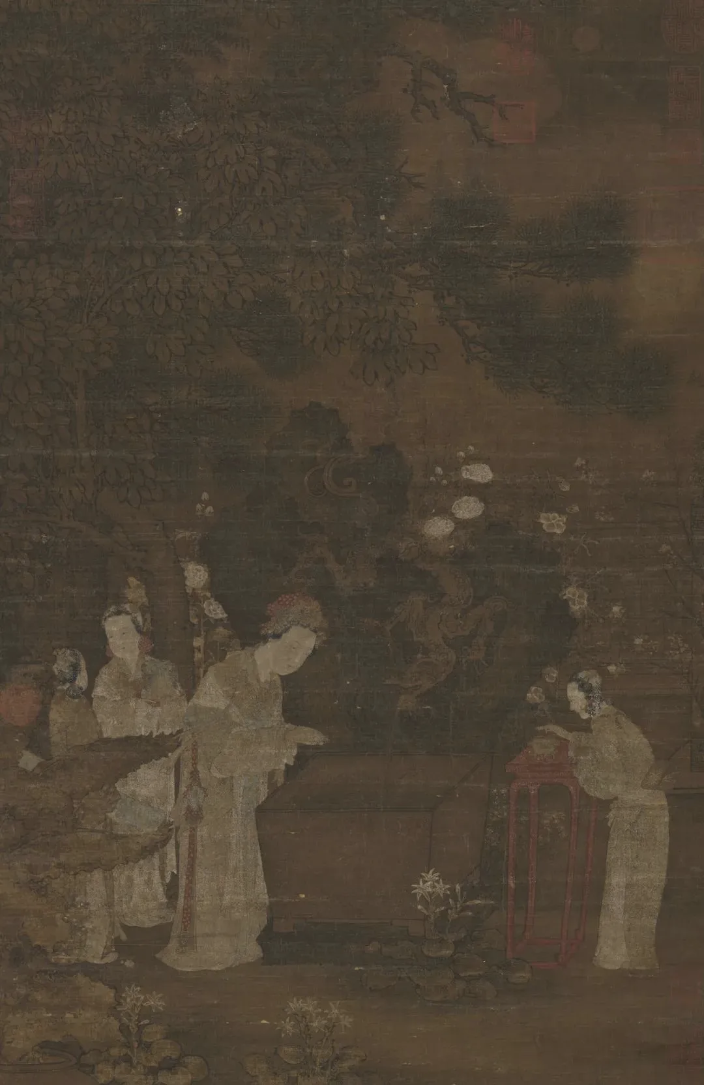
"Washing in Moonlight" (Five Dynasties, Anon., collection of the National Palace Museum, Taipei, China)
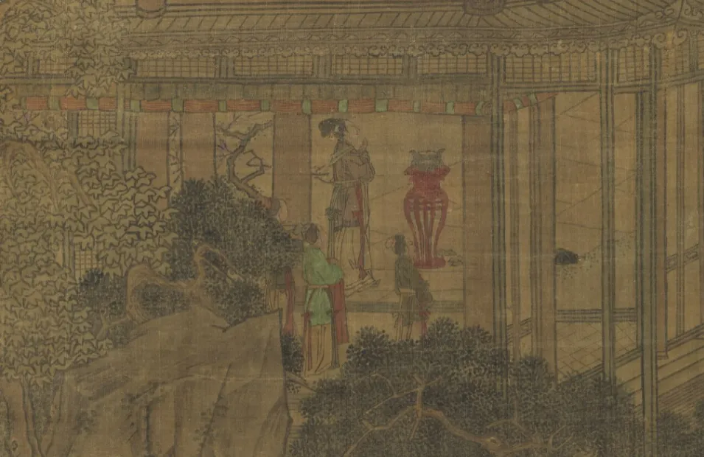
"Moon Worship" (Fragment. Song Dynasty, Anon.)
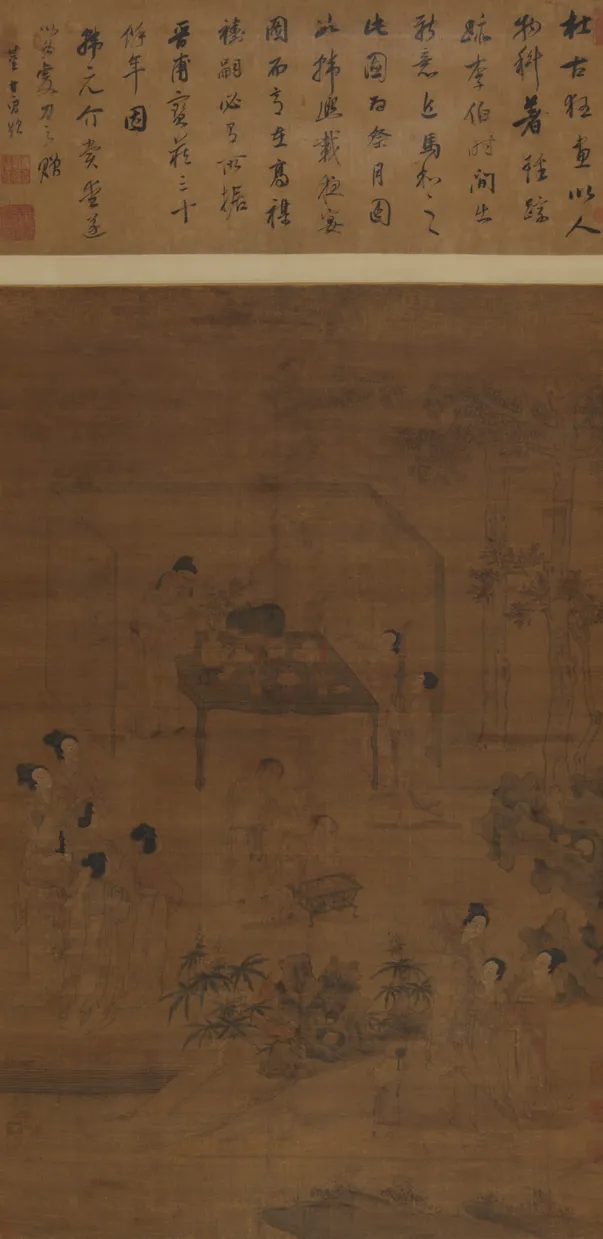
"Sacrifice to the Moon" (Ming Dynasty, Du Jin, National Art Museum of China collection)
Drinking Wine and Eating Mooncakes
Mooncakes were popularized in the Song Dynasty, eventually achieving the status of main dish on the Mid-Autumn Festival dinner table. It was popular to eat "palace cakes" during the Mid-Autumn Festival at the Song Dynasty court, which commoners called "small cakes" or "moon cakes." Su Shi, a polymath and bon vivant, wrote: "Eating these small cakes is like chewing the moon, with crisp and sweet fillings inside." The Song Dynasty literary work The Eastern Capital: A Dream of Splendor records: "On Mid-Autumn night, the nobility decorate their pavilions and terraces, while commoners throng into alehouses to view the round moon. The world is alive with music and dance."
Technology, including liquor production techniques, was greatly innovated during the Song Dynasty. The Mid-Autumn Festival was traditionally the time when new wines made their way to market. The Song Dynasty literary work Meng Liang Lu records that during the Mid-Autumn Festival in the Southern Song Dynasty, the rich drank and sang, while the poor traded their clothes to buy wine, making for a highly festive atmosphere: "The moonlight this night is twice as bright as usual... Even the families who sell food and meals go up to the small moon platform to arrange a family banquet and gather their children to celebrate the festival. Even the poor people on the streets trade the shirts off their backs to buy wine and celebrate however they can, unwilling to waste their chance."
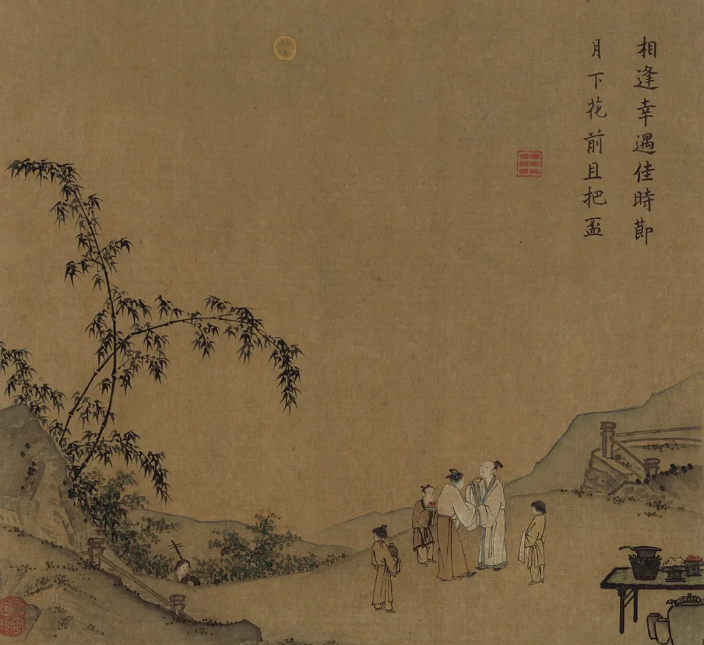
"Drinking Beneath the Moon" (Song Dynasty, Ma Yuan, Tianjin Museum collection)
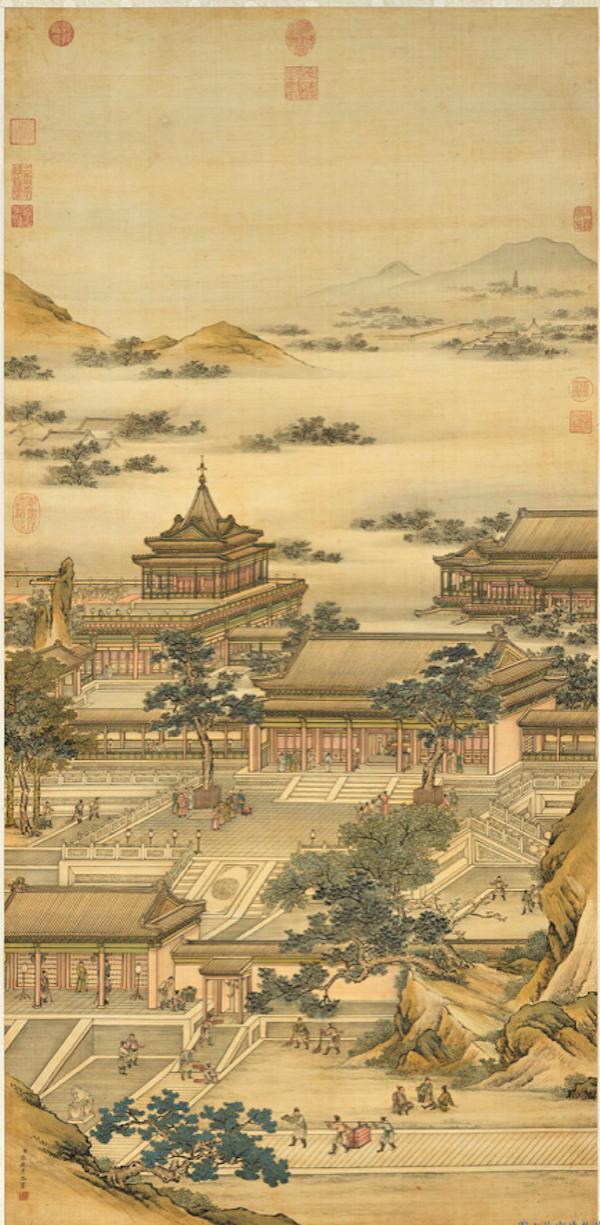
"Mid-Autumn Festival Celebration" (Scroll. Qing Dynasty, Zhang Tingyan, collection of the National Palace Museum, Taipei, China)
Romanticizing
For thousands of years, Mid-Autumn Night, swirling with the heady bouquet of osmanthus blossoms and the chill of early dew, was the source of endless romanticizing for the ancients. Though they were never able to physically land on the moon and explore it like we have been able to do, they never stopped imagining what it would be like up there. On that night when the moon was at its fullest and brightest, ancient painters would trace images of white rabbits and red osmanthus to visualize the fascinating "Moon Palace" in the sky.
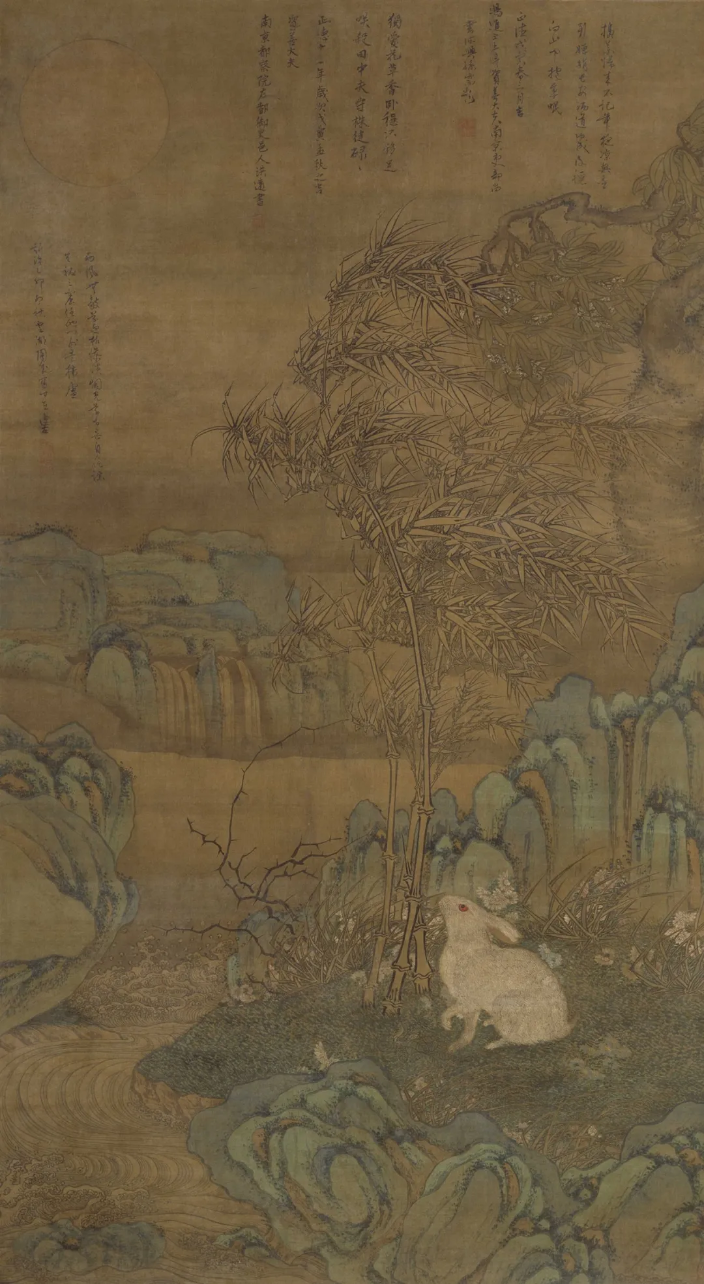
"The Moon Palace and Moon Rabbit" (Ming Dynasty, Tao Cheng, Palace Museum collection)
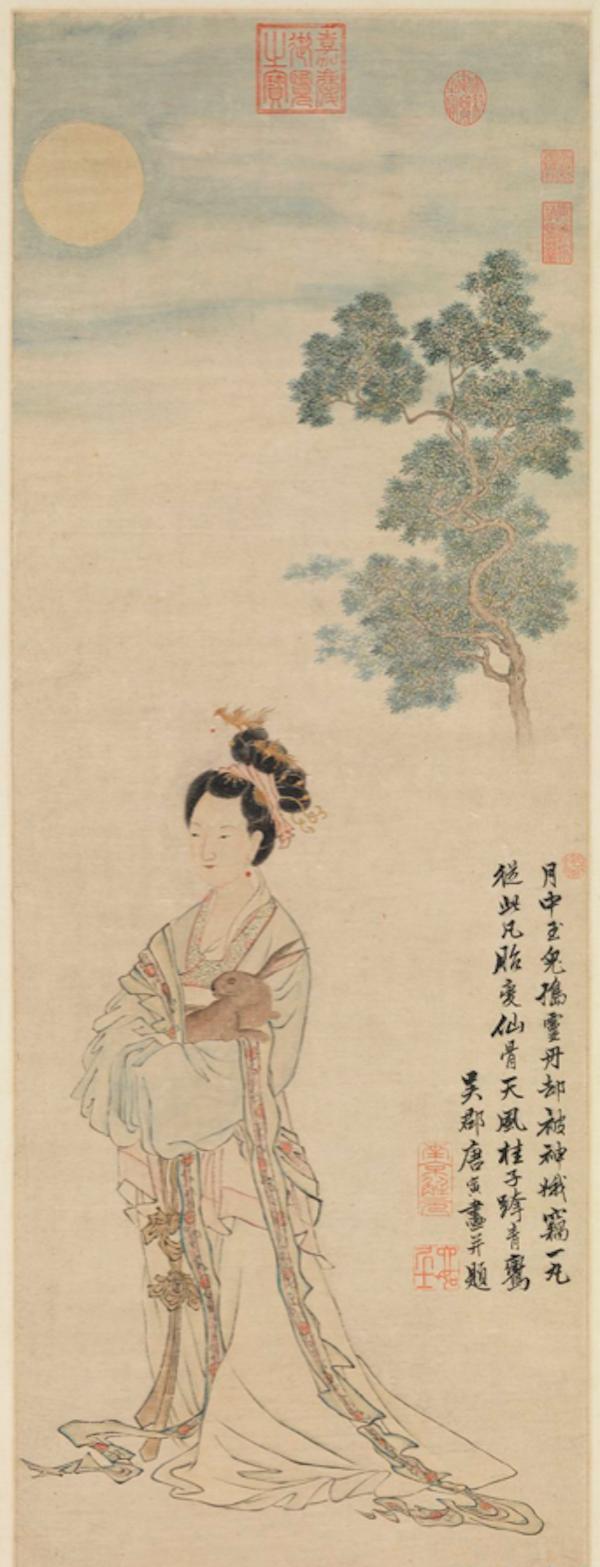
"Painting of Chang'e Flying to the Moon" (Scroll. Ming Dynasty, Tang Yin, collection of the National Palace Museum, Taipei, China)
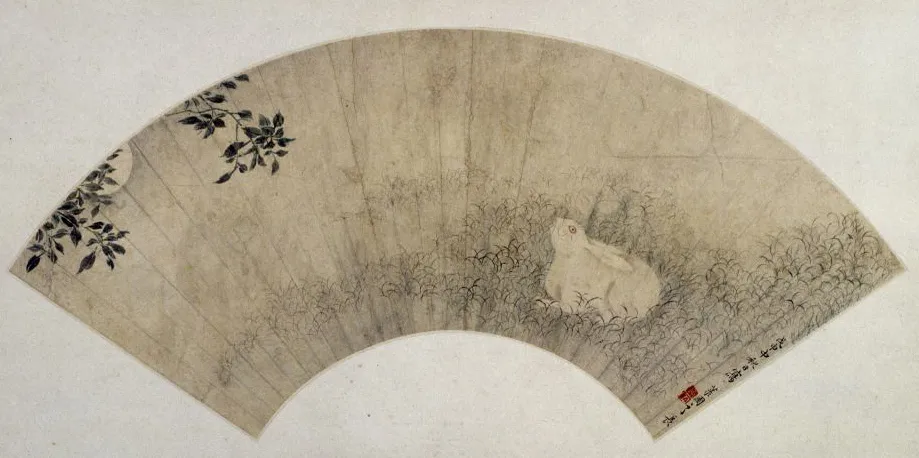
"Osmanthus and Moon Rabbit" fan leaf (Qing Dynasty, Li Shizhuo, Palace Museum collection)
Watching the Qiantang Bore
In the Jiangsu and Zhejiang area along the Qiantang River, a unique Mid-Autumn Festival tradition emerged in the Song Dynasty: watching the Qiantang bore. Due to the funnel-like mouth of the Qiantang River, every time the moon is full, the tide surges up the river and the resulting waves pile up to form a wall of water, creating a visual and aural spectacle. The Song Dynasty poet Su Dongpo once described this magnificent phenomenon: "If you want to know how high the tide is, see how far the frothy waters of the Qiantang lap up the mountainside."
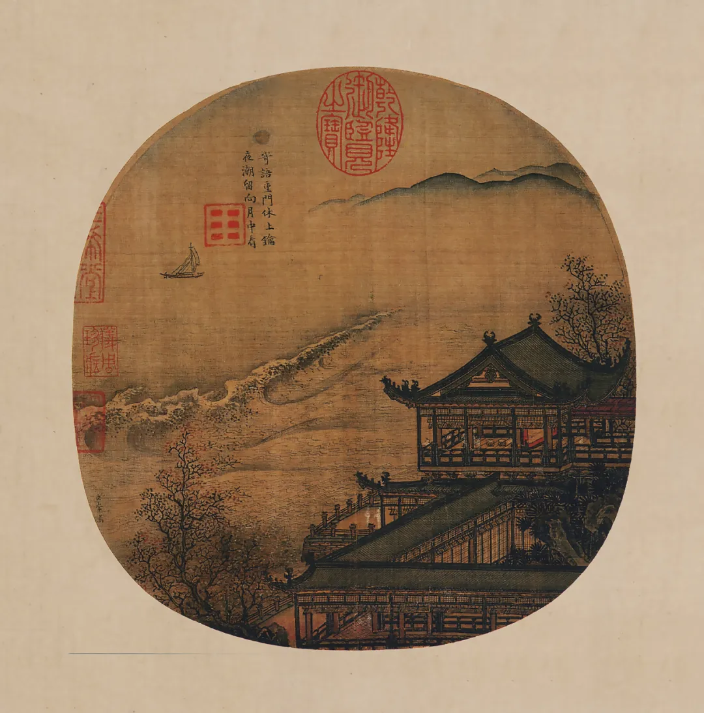
"Watching the Tide on a Moonlit Night" (Song Dynasty, Li Song, collection of the National Palace Museum, Taipei, China)
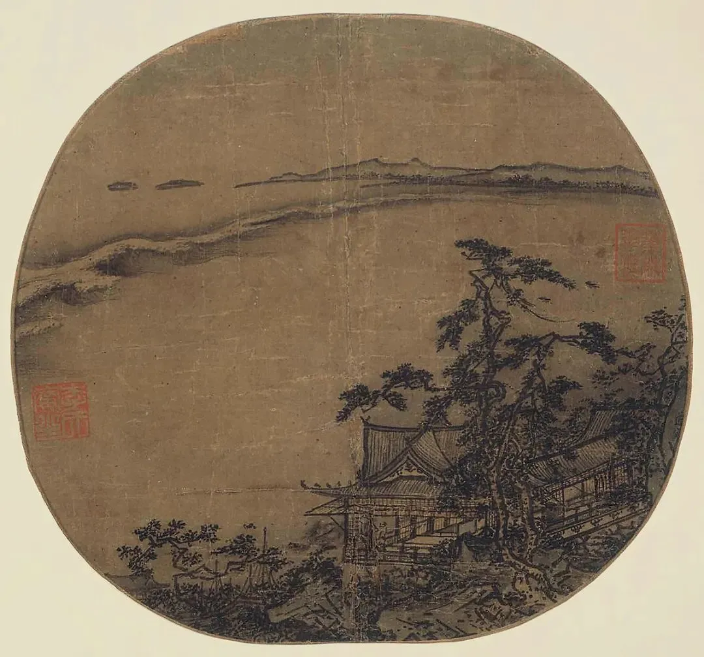
"Watching the Tide" (Song Dynasty, Anon., collection of the Boston Museum of Fine Arts, USA)
Overseas Chinese Architecture in Hainan ④: Shibahang Village’s Code of Unity
05:47, 27-June-2025World Insect Week: Fantastic Flying Creatures in Hainan’s Rainforests
05:47, 27-June-2025Yangpu International Container Terminal Opens Direct Shipping Route to India
05:47, 27-June-2025It's time for Hainan "Village VA"!
03:13, 26-June-2025Surprise Delivery of Hainan Gifts!
03:13, 26-June-2025One invitation and they came to Hainan right away! Look, they are arriving!
03:12, 26-June-2025By continuing to browser our site and use the services you agree to our use of cookies, Privacy Policy and Terms of Use. You can change your cookie settings through your browser.
